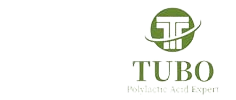11. Eco-Friendly and Recyclable Options
As sustainability becomes a top priority, DuPont paper’s eco-credentials are a major advantage. Certain grades are:
-
Recyclable (depending on local systems)
-
Reusable (ideal for signage and instructions)
-
Free from harmful coatings or laminates
-
Long-lasting, reducing waste from frequent replacements
By using DuPont paper, businesses can reduce their environmental footprint while still delivering premium performance.
2. Cost-Effective Over the Product Lifecycle
Although the initial cost of DuPont paper may be higher than traditional paper, its long-term cost efficiency is one of its strongest selling points.
Here’s why:
-
Reduces need for reprinting or replacements
-
Withstands shipping and handling without extra protection
-
Performs better in extreme conditions (heat, cold, chemicals)
For industries where downtime or rework is costly, the investment in DuPont paper delivers a strong return on investment (ROI).
3. Lightweight Yet Strong
Despite its toughness, DuPont paper remains extremely lightweight, which reduces:
-
Shipping costs
-
Material handling time
-
Packaging bulk
This is especially beneficial in logistics, air travel, and online retail where lightweight packaging translates to lower transportation expenses and faster processing.
4. Customizability
DuPont paper can be tailored to meet specific needs. Sellers can offer clients:
-
Different textures (smooth, matte, embossed)
-
Varying thicknesses (from thin film to thick sheets)
-
Die-cut shapes and sizes
-
Coatings for added functionality (e.g., anti-static, matte, glossy)
This level of customization allows businesses to align their packaging, signage, or branding perfectly with their market image and technical needs.
5. Global Brand Trust
DuPont is a globally trusted name in science and innovation. Associating with a brand known for safety, precision, and quality provides built-in credibility. End-users often feel more confident purchasing materials backed by a reputable manufacturer.
This is particularly useful when selling to:
-
Multinational corporations
-
Government and defense buyers
-
Healthcare and pharmaceutical clients
Leveraging the DuPont name can open doors to high-value contracts and international markets.
6. Excellent Inventory Life
DuPont paper has a long shelf life and resists aging. Even after months or years in storage:
-
It does not yellow or curl
-
Ink remains vibrant
-
Material retains flexibility
This makes it ideal for use in emergency supplies, long-term manuals, and archiving applications—where reliability over time is critical.
7. Safety and Compliance Friendly
DuPont paper can meet various international safety and compliance standards, such as:
-
RoHS (Restriction of Hazardous Substances)
-
REACH (Registration, Evaluation, Authorization of Chemicals)
-
FDA compliance for indirect food contact (certain types)
This expands its usability across regulated sectors like pharmaceuticals, food handling, and electronics.
Conclusion
DuPont paper offers a powerful combination of durability, printability, environmental resistance, and adaptability—making it a premium solution for today’s demanding markets. Whether your customers need materials for industrial labeling, retail packaging, safety documentation, or logistics, DuPont paper delivers both performance and value.
Its key selling points include:
-
High strength and water resistance
-
Superior printing and branding quality
-
Multi-industry versatility
-
Eco-friendly options
-
Long-term cost savings
As markets evolve and expectations rise, selling DuPont paper means offering a material that goes beyond function—it becomes a strategic asset that supports quality, compliance, sustainability, and customer satisfaction.
